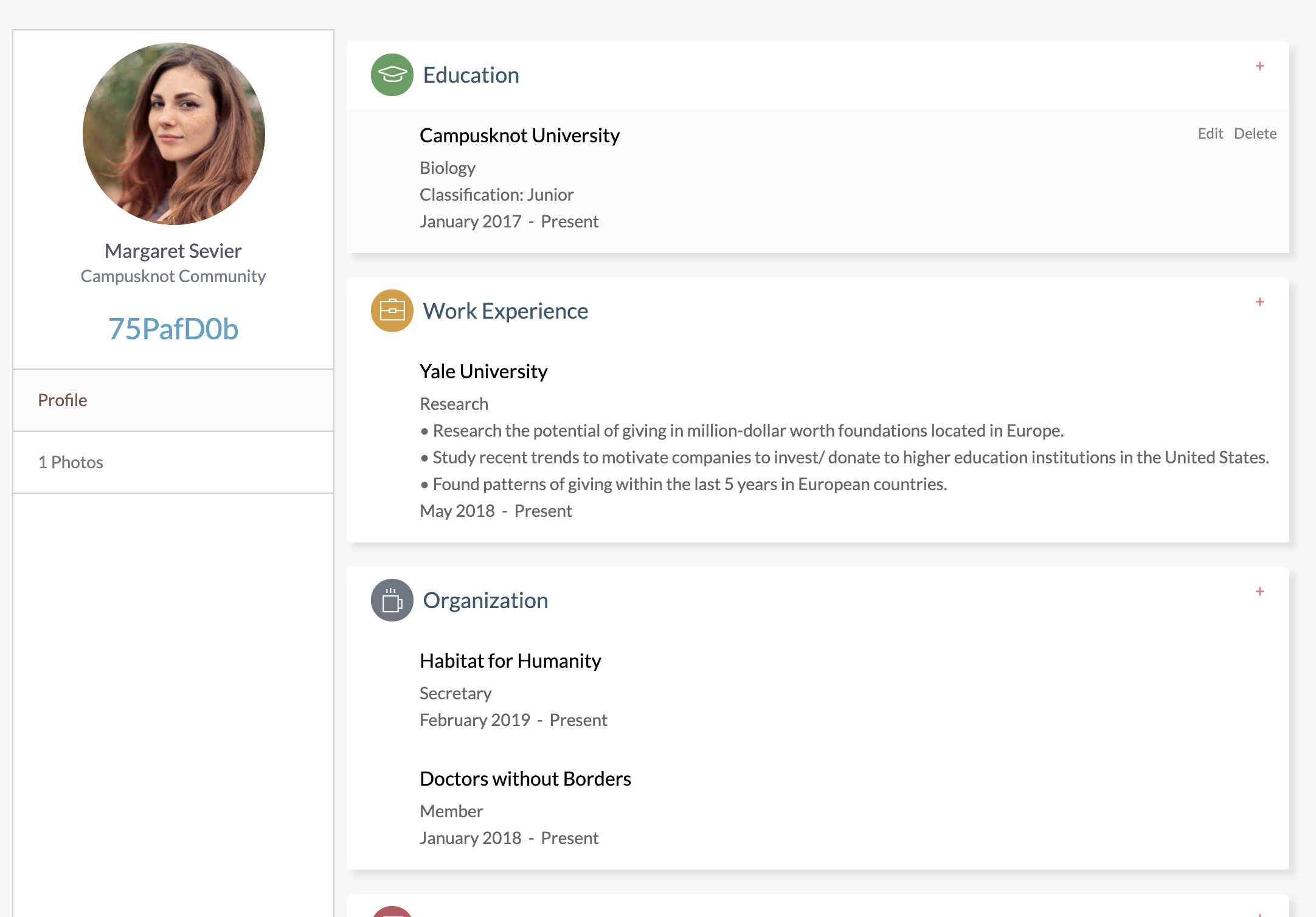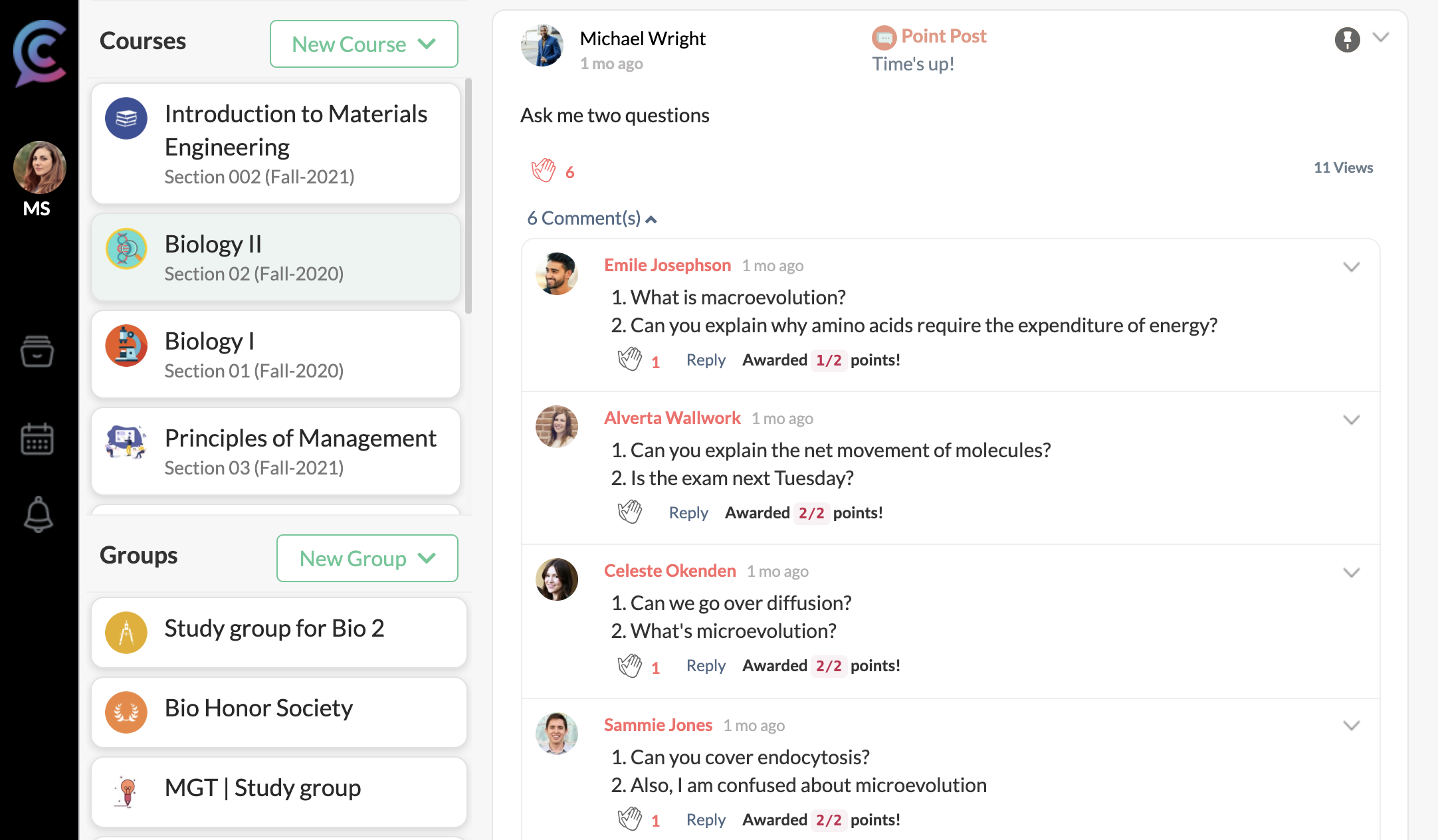Building community in class involves facilitating connectivity between instructors and students. However, as class size increases, teamwork and connectivity amongst students become more complicated. This blog covers how social interactions are positively linked with learning outcomes and how to use technology to create a welcoming classroom community.
1. Incorporate personal profiles
Building community is all about creating and fostering human connections and interactions. In a recent Forbes article, Julian Vigo wrote about generation Z addressing new technology as an “extension of themselves” rather than an addiction or compulsion.

Inside CampusKnot, students can put a face and a name together with profiles while also being encouraged to participate with their peers.
At the beginning of the semester, you can encourage students to set up their profiles and connect with peers with similar educational backgrounds. Here are two tips to try at the beginning of the semester:
- Learn to call your students by name.
- Learn something about your students’ interests, hobbies, and aspirations.
2. Feedback, feedback, and more feedback
Immediacy, intimacy, and a sense of group cohesion (Sung & Mayer, 2012) are some of the essentials for successful community building. Building a community through feedback allows professors and students to interact anytime from anywhere.
Gaining feedback can provide educators and students clear guidance on performance, self-awareness and can often lead to enthusiasm while learning. This is why we have created a set of tools that rewards and encourages student participation.
All you need to do is create questions inside the polls or the feed. Then give your question a set of points, to reward students, and once you’re ready, post the content.

Did you know inside of CampusKnot you can auto-grade participation posts? Learn more here.
A few activities to try this semester:
- Emphasize active learning by implementing the 1-minute essay.
- Reward student comments and questions.
- Run polls to assess course retention at the end of the week.
3. Post and encourage office hours
One-on-one interactions with your students are important. Office hours allow for connections with individual students on a more personal level. Schedule your office hours ahead of time so students can schedule a time with you during the semester. Setting visible office hours allows all students to see your availability instead of walking into your office while you’re helping other students.
A few activities to try this semester:
- Be enthusiastic about teaching.
- Use relevant class examples.
- Establish class expectations early on so students know you’re available.
Ultimately students’ level of comfort in the classroom- whether that is in-person, online, or hybrid- can affect their understanding of the material. Building community is the first step to better interactions and organic community inside the classroom.
Ready to increase participation in your classes? With CampusKnot you can create fun activities to engage your classes. Get started for free here.




